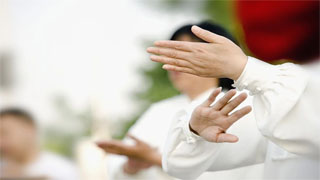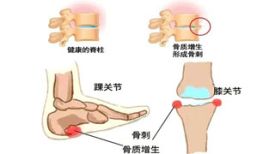
Wrist, a particularly vulnerable and easily overlooked 'little unlucky'.
When falling during exercise, landing on the palm can easily lead to wrist sprains; Repetitive shooting, swinging, and other movements in ball sports can also cause strain on your wrist joints.
If you accidentally twist your wrist during exercise, be sure to stop moving in a timely manner. Today, I have sorted out the symptoms, prevention, and treatment methods of wrist sprains for everyone. You can save them first and take a look later.
1、 Symptoms
Pain
There is varying degrees of pain or tenderness in the wrist. If it is a minor injury, you can rotate your wrist up, down, left, and right appropriately to see if there is pain.
Swelling
There may be swelling in the wrist. Compare the wrists of both hands to see if the injured wrist is swollen.
Functional impact
If it is a serious injury, it will affect wrist movement.
other
The wrist may be numb or deformed. Check if there is any loss in grip strength, press down on the nasal cavity to see if there is pain, and have the doctor assess if there is a fracture of the scaphoid bone.
2、 Inducing factors
There is no good protective mechanism when falling. When falling, try to hold your head with both hands and use a rolling posture to relieve the impact force, rather than supporting the ground with your hands.
Excessive use of wrist joints. Engaging in excessive shooting movements in basketball.
3、 Prevention guidance
Stretching wrist flexors, wrist extensor muscles, pronator teres, etc.
Strengthen the strength of wrist flexors, wrist extensor muscles, finger flexors, finger extensor muscles, etc.
Strengthen upper limb muscle strength, enhance lower limb, trunk, and shoulder strap muscle strength, and improve their stability.
● Improve balance ability.
Warm up thoroughly before training and relax thoroughly after training. Master the correct technical movements and correct incorrect movements. Regularly exercise the strength of upper limb muscles and strengthen the overall strength of upper limb and trunk muscles. Enhance balance ability. Strengthen education, such as learning protective postures and not using hands to support the ground when falling. Do not overuse the wrist joint. After exercise, the wrist joint should be stretched, hot pressed, and massaged in a timely manner. When discomfort occurs in the wrist joint due to strain, the amount and intensity of exercise should be adjusted in a timely manner.
4、 Handling guidance
acute stage
If the damage is severe, the activity needs to be stopped immediately.
In case of serious injury, it is necessary to fix the injured area with a splint and then seek emergency treatment at the hospital.
After injury occurs, even if the appearance is normal, the wrist should be checked every few hours to see if there is any damage.
Apply ice packs to the injured area 2-3 times a day, which can help alleviate pain and reduce inflammation.
Non acute phase
In daily activities, it is necessary to use a splint to fix the injured area.
If there is no improvement after 2 weeks, it is necessary to seek medical attention promptly and have a doctor evaluate the injury.
Physical therapy is used to relieve pain and promote tissue healing.
Use braces to protect and avoid painful movements.
● Conduct upper limb strength training.
Perform finger and wrist stretching training and joint mobility training.
5、 Recommended training plan for the middle and late stages of rehabilitation
01. Finger stretching
3 times/day
10 times x 1 group
Practice purpose
Improving finger flexibility can help prevent and recover from wrist sprains, tendinitis, wrist fractures, triangular fibrocartilage complex injuries, finger fractures, and other finger injuries.
Main muscles
Finger flexor muscle group.
Initial posture
Sit on a chair that is knee high, with feet wider than your shoulders, legs naturally bent to support, keeping your waist straight and head in a neutral position, leaning your torso forward about 45 degrees, bending your arms forward, placing your elbows on your knees, extending your forearms naturally, and letting your hands hang down naturally.
Action process
Maintain a constant body posture, stretch your hands with palms down, and use force to spread your fingers apart to the maximum extent possible.
Maintain this position for 2-3 seconds and return to the initial position. Repeat the action a specified number of times.
02. Active stretching - dynamic wrist flexion and extension
3 times/day
10 times x 1 group
Practice purpose
Improving the flexibility of wrist muscles can help prevent and recover from wrist sprains, tendinitis, wrist fractures, injuries to the triangular fibrocartilage complex, finger fractures, and other finger injuries.
Main muscles
Radial wrist flexor muscle, ulnar wrist flexor muscle, radial wrist extensor muscle, ulnar wrist extensor muscle.
Initial posture
Stand upright with your body in a straight position, looking straight ahead, feet shoulder width apart, arms raised horizontally, hands in palms, palms facing each other.
Action process
Maintain the posture of the torso, lower body, and arms unchanged, and bend the wrists inward with both hands until there is a certain degree of stretching sensation in the target muscles.
Maintain this position for 2-3 seconds.
Maintain the posture of the torso, lower body, and arms unchanged, and extend the wrists outward until there is a certain degree of stretching sensation in the target muscles.
Maintain this position for 2-3 seconds.
Repeat the action a specified number of times.
03. Active stretching - Dynamic Swiss ball wrist rotation
3 times/day
10 times x 1 group
Practice purpose
Improving the flexibility of the wrist joint can help prevent and recover from wrist sprains, tendinitis, wrist fractures, injuries to the triangular fibrocartilage complex, finger fractures, and other finger injuries.
Main muscles
Radial anterior flexor muscle, ulnar wrist flexor muscle, radial extensor muscle, ulnar wrist extensor muscle.
Initial posture
Stand in front of the Swiss ball at a distance of about half an arm, with feet shoulder width apart. Bend your hips 90 degrees and knees 45 degrees to make your body in a semi squatting position. Extend one arm diagonally forward and downward, slightly bend your palm, straighten your fingers, and place your fingertips on the top surface of the Swiss ball. Extend your other arm downward and place your hand on the knee joint on the same side.
Action process
Maintain a constant body posture and rotate the wrist joint clockwise, causing the Swiss ball to rotate while the target muscle also feels a moderate level of stretch.
Rotate to the specified number of times or time.
Maintain a constant body posture and rotate the wrist joint counterclockwise, causing the Swiss ball to rotate while the target muscle also feels a moderate stretch.
Rotate to the specified number of times or time.
Perform the same action on the opposite arm.


